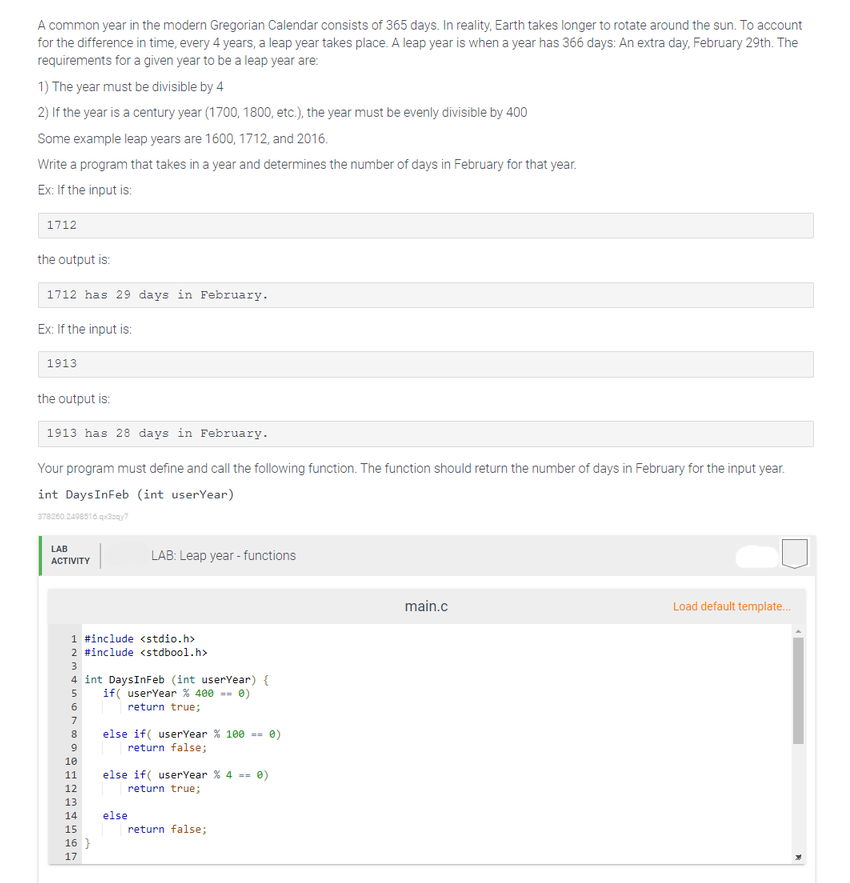A common year in the modern Gregorian Calendar consists of 365 days. In reality, Earth takes longer to rotate around the sun. To account for the difference in time, every 4 years, a leap year takes place. A leap year is when a year has 366 days: An extra day, February 29th. The requirements for a given year to be a leap year are: 1) The year must be divisible by 4 2) If the year is a century year (1700, 1800, etc.), the year must be evenly divisible by 400 Some example leap years are 1600, 1712, and 2016. Write a program that takes in a year and determines the number of days in February for that year. Ex: If the input is: 1712 the output is: 1712 has 29 days in February. Ex: If the input is: 1913 the output is: 1913 has 28 days in February. Your program must define and call the following function. The function should return the number of days in February for the input year. int DaysInFeb (int userYear) 378260.2498516 qudzay? LAB LAB: Leap year - functions АCTIVITY main.c Load default template. 1 #include 2 #include 3 4 int DaysInFeb (int userYear) { if( userYear % 400 -- 0) return true; 7 else if( userYear % 100 =- e) return false; 8 9. 10 else if( userYear % 4 == 0) return true; 11 12 13 14 else 15 return false; 16 } 17
Control structures
Control structures are block of statements that analyze the value of variables and determine the flow of execution based on those values. When a program is running, the CPU executes the code line by line. After sometime, the program reaches the point where it has to make a decision on whether it has to go to another part of the code or repeat execution of certain part of the code. These results affect the flow of the program's code and these are called control structures.
Switch Statement
The switch statement is a key feature that is used by the programmers a lot in the world of programming and coding, as well as in information technology in general. The switch statement is a selection control mechanism that allows the variable value to change the order of the individual statements in the software execution via search.

Trending now
This is a popular solution!
Step by step
Solved in 2 steps with 1 images




